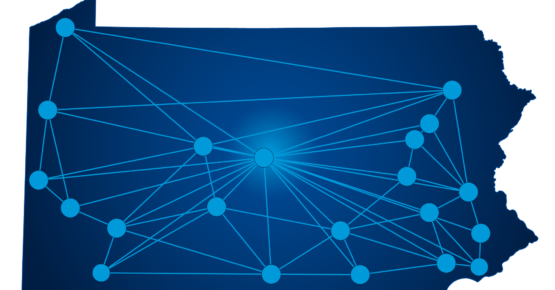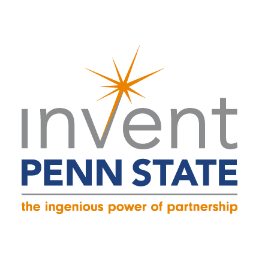Making Entrepreneurship Accessible in Rural America
Laying the foundation.
Work started internally to lay the foundation for launching the initiative.
President Barron assembled a small group of senior administrators, university staff with startup and industry experience, and community economic development professionals to help shape and launch the initiative.
This team made multiple visits to each of Penn State’s 21 Penn State campuses to meet with campus leadership, faculty, and students as well as local chambers of commerce, community foundations, and industry leaders.

One size didn’t fit all.
Had we tried to dictate process or services, we would have failed to acknowledge the wide range of unique challenges and opportunities there were across Pennsylvania.
A “one size fits all” solution dictated by Penn State would have failed as it would not have taken into account differences in local resources, culture, readiness, or belief that entrepreneurship might be an accessible pathway to economic stability.
These early understandings, combined with the Ag Extension model of providing services locally across the commonwealth, were key in defining the tenets of the initiative and setting the strategy for moving forward.
Tenants served as guideposts, not rules.
These four tenets served as guideposts for fostering entrepreneurship and innovation, but did not dictate what services and resources would be provided or who would provide them.
In hindsight, we didn’t realize just how critical it was to allow the “how” and “what” to unfold organically.
-
Provide services in the local community.
Honoring a commitment to localities.
Several principles underpinned the focus on local activity:- First, since Invent Penn State hoped to serve a broad cross-section of the population, it needed to mirror the university’s longstanding commitment to localities—and go a step further by making services accessible in downtown areas versus more remote ag extension offices.
- Second, locating in downtown areas, and not in on-campus spaces, would create spaces where community members, undergraduates, faculty, and staff could network and develop their ideas.
With extension offices in every county in Pennsylvania, Penn State already had a statewide footprint and had demonstrated an ability to intersperse its support services with the local population.
-
Co-create services with local partners.
A focus on new.
The emphasis on partnering was seen as a way to build the infrastructure needed to support the wide variety of needs experienced by local entrepreneurs, both those with established businesses and those working to open new ones.Partners could help create and deliver new local programming, providing greater access to resources and increasing the potential impact of the initiative.
A collaborative approach.
Externally, the emphasis on partnership was intended to make it clear to other economic development groups that Penn State was not attempting to “cannibalize” or take over current efforts, but to work collaboratively to increase resources.Internally, the objective was to send the message to Penn State leadership at the Penn State campuses that the initiative would not be a new source of funding for existing programs, but rather a call to try something new in support of their local economy.
In fact, the Invent Penn State initiative’s tagline—“The ingenious power of partnership”—was designed to speak to the importance of this type of collaborative approach.
-
Offer services to everyone.
No connection to Penn State was needed.
For the initiative to make a significant impact, services and resources needed to be broadly available to the public.Dr. Barron felt that it was important to have a physical presence in the downtown community, versus on campus, to signal to area residents that you didn’t have to be taking classes, in a degree program, or an employee to access services.
Creating spaces downtown areas also filled a major gap in lack of coworking spaces in many small communities. In major markets, for-profit coworking spaces were abundant, but in rural communities, there was insufficient demand creating a void for many.
“Open to all” message was difficult to convey.
Even when the innovation space was located downtown as opposed to on campus, most believed some sort of prior relationship to Penn State was needed to access services.Not surprisingly, saying that we were open to everyone, wasn’t enough to make everyone feel welcome or for them to believe services were accessible to them.
In hindsight, we needed to be more deliberate in helping locations build awareness of the unique challenges faced by underrepresented entrepreneurs in their communities. Without this understanding, we were likely to miss out on tremendous untapped potential for building thriving entrepreneurial communities.
-
Distribute ownership and decision-making.
Freedom to experiment.
University leadership recognized that each location would be different, and that defining a prescribed set of services across all locations was unlikely to work.Specifically, having a distributed model ensured that:
- Ownership and decision-making was entrusted to local campus leaders who, by the nature of their work, were likely to be already connected to their communities.
- Leadership at each location was responsible for figuring out what resources and support they’d provide to their community, how they’d provide it, and who they’d provide it to.
- Locations had the freedom to experiment and adapt as necessary, and to do so at their own pace.
Limiting risk.
On the surface, the notion of a highly visible, presidential priority being run as a collection of disconnected local experiments might have seemed like a recipe for disaster. But several factors proved to limit the associated risk.- Each community has different strengths and weaknesses, opportunities and challenges, and available partners and resources. There could be no list of “approved” programs; no centralized database with recommendations and guidelines.
- Invent Penn State was created as an initiative, not a program. While this may seem like semantics, introducing this new language turned out to be an important distinction within the university’s structure. Programs, generally speaking, have a more traditional hierarchy; there’s a program manager, dedicated resources, and a more clearly defined sense of who is part of it and who is not. With an initiative, ownership and decision-making could evolve over time. With this designation, it was easier to adapt as we learned and grew.
Discover More
Dive deeper into how we built a statewide economic development infrastructure.

Learn more about challenges that emerged early in the process.

